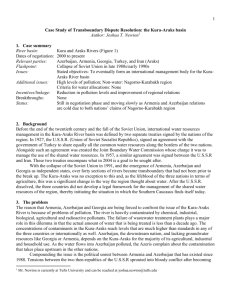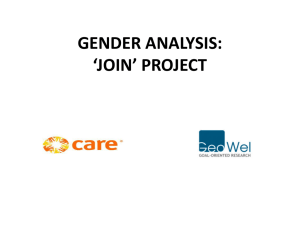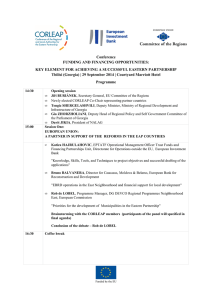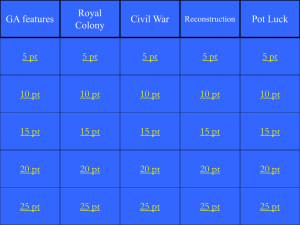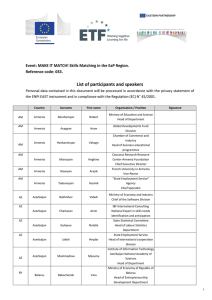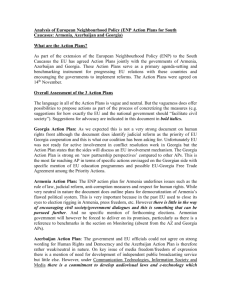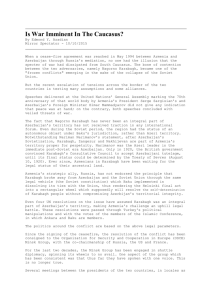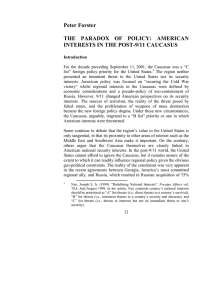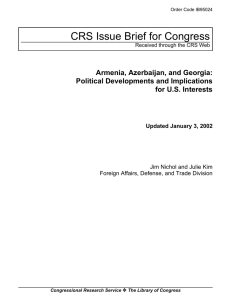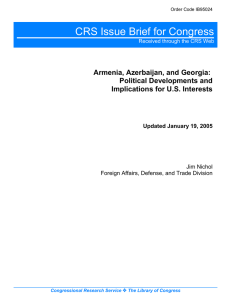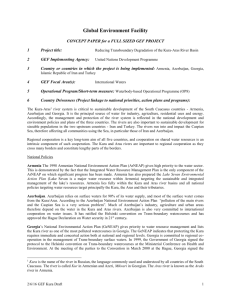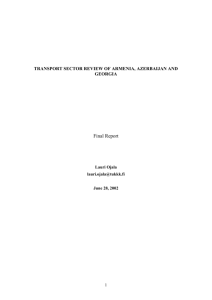pptx
advertisement
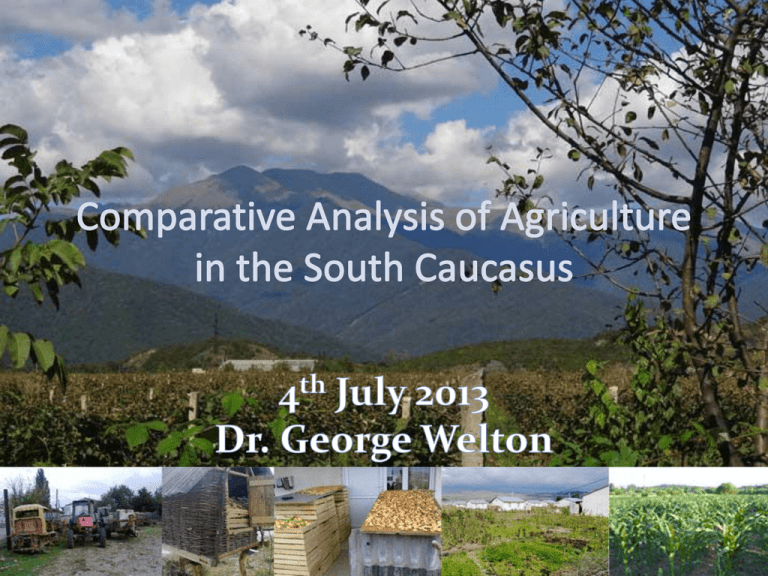
The importance of agriculture in the Caucasus employment poverty growth security Employment/Poverty • Commonalities – Most rural families are ‘employed’ in this way – But massively under-employed • Rural communities (particularly isolated communities) are generally poorer • Median income for agricultural ‘employed’ is low relative to other sectors Therefore • In urban communities the problem is unemployment • In rural communities the problem is under-employment and low productivity Georgia has strong basics • High rainfall – more than 2x Azerbaijan – almost 4x Armenia • Large number of microclimates for high value goods – Nuts – Citrus • Low labour costs • Land prices • Potential sources of low-price energy (hydro and thermal) But Georgia has low productivity Productivity per hectare in various countries Wheat Maize Potatoes Tomatoes 1 1.4 11 8.4 Armenia 2.1 4.7 17 38.7 Azerbaijan 1.9 4.5 14.5 17 Kenya 3.2 1.6 2.9 29.2 Brazil 2.8 4.4 25.3 60.7 France 7 8.9 39.8 98.3 Turkey 2.4 7.3 32.3 33.1 Georgia And a bad comparative decline • Georgia has seen 11% decline per year on average 1990-2000 – 0.6% recovery per year (2000-2010) – Overall 20% growth in value(1996-2010) • Both Armenia and Azerbaijan have seen far higher growth – Armenia showing particularly high growth in beef and vegetables (4-6% for beef, 7-10% vegetables per year 2000-2010 volume growth) – Azerbaijan seeing dramatic increase in beef and in grain production (7-10% for beef per year 2000-2010, 78% for grain 1995-2005 volume growth) Slow recovery – the role of the state? • Shevardnadze Government – Failed state – Collapse in infrastructure • UNM Government – Lack of attention and a rural focus – The problems of libertarianism • Animal disease • Irrigation • Education – The problems of state competition An example - irrigation can be fixed • Armenia and Azerbaijan have seen significant improvements • Georgia improvements less impressive. What is needed: – Very local management – Commitment to reinvest revenues – Remove confusion of energy production/agriculture The difference is not just spending • Georgia – at its low point in 2010, Ministry of agriculture spending represented 0.5% of total spending • Azerbaijan hard to estimate but huge categories of inputs are massively subsidized. This has led to distortions. • Armenian MoAg spending only around 1% of total. However: – More market driven – Focused on education and rural advise – Consistent Market Access – Internal – Georgia is clearly better • Easier business environment (E0DB- Georgia – 9, Armenia – 32, Azerbaijan - 67) • Armenia has a few big producers offering forward pricing – External Access • Armenia and Azerbaijan – Access to Russia • Georgia – unutilized access to West – External competition • Georgia has unprotected markets Land ownership and useage • The problem is NOT size of land-plots • But privatisation and good land-purchasing system is useful for encouraging FDI • All countries have issues with land-ownership • Problems in Georgia’s system – GPS system is unlikely to lead to correction of ownership issues without central input – Ownership issues hurdle to large and small farmers – though biggest challenge FDI Agricultural support services For crops: Machinerry, seed, fertiliser, pesticides, orrigation For animals: Veterinary, genetics, feed For all: Cost and availability of finance Lessons learned from the region •Government financing is common •Financing mechanism is key – needs to work through markets •One needs to be wary of causing distortion - Azerbaijan •In many areas – subsidy of support services is no use without education Sector dynamics Beef and Lamb • Imports of beef went up until 2008 • Exports of live animals (beef and lamb) have gone up dramatically and local production of beef went down • Local production has gone down (as they are exported as live animals) Dairy • Driving force of farming sector • Most dairy consumed as cheese. All three countries in the region have high self-sufficiency in own cheese production But • Very low milk yield • Inefficient use of time in home production Meat and dairy problems - Animal disease Bad genetics Animal feed Poor education Missed opportunity - Mountain grazing is under-utilised – could be used to raise more calves - Low use of animal feed makes lowland pasture a limiting factor on growth - Demand for ‘fresh cheese’ in the winter – suggests opportunity for shift in milk production Trends - Crops Increase Potatoes Nuts Watermelons Wheat Maize Decrease Tomatoes Grapes Exports Growth Areas International Commodity Nuts Wine/Spirits Live animals Fresh fruit and vegetables Regional Commodity Two Agricultures. Two Problems Small Farmers Commercial Farmers Irrigation Land ownership Chronic disease leads to low productivity Availability of capital Disease is big risk for investment Cost of capital Availability of quality inputs High level management and agronomists Complex social environment Basic knowledge Conclusions for Georgia •Significant opportunities exist. Highest demand depends upon: •Unusual climate (nuts and some citrus) •Geography (live animals and fresh fruit and vegetables) •Cultural product (wine) •Demand/opportunity also exists in supply chain •Sustainability requires limited government intervention General •Need to ensure that policies are consistent and market oriented •Government should first focus on structural problems •Education •Irrigation •Animal health •Land-ownership •Cooperatives Thank you
